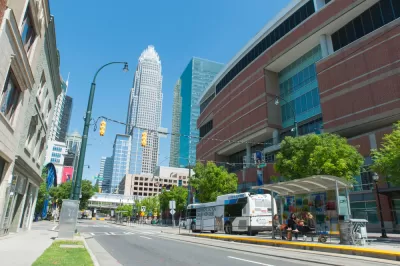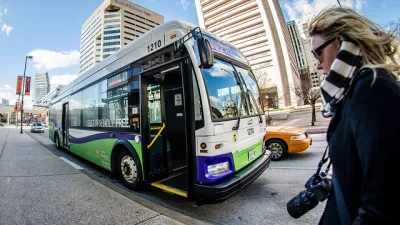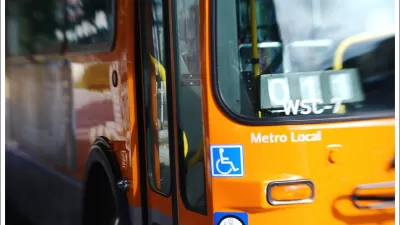The epidemic of falling ridership has struck no American city as hard as Charlotte, but there's plenty that could be done to recover.

American bus transit is in a bad state, and by the numbers, Charlotte, North Carolina is in the worst shape of any large city in the country. "The current CATS transit network simply isn’t working very well for many of the 75 percent of its riders who use the bus. The average one-way travel time for a CATS passenger who has to transfer between routes is 90 minutes," Shannon Binns argues for the Charlotte Observer.
The city has a plan to redesign and grow its bus network to make it more frequent, walkable, and direct. "A redesigned bus network will not only better serve current riders, but also attract new ones. TransitCenter, a New York-based foundation dedicated to transit reform, identifies growth in the number of people who ride transit often and for multiple purposes as an important indicator of whether transit is serving its function of helping a city meet its “triple bottom line” of economic growth, environmental stability, and social equity," Binns reports.
FULL STORY: The secret to attracting more transit riders in Charlotte

Maui's Vacation Rental Debate Turns Ugly
Verbal attacks, misinformation campaigns and fistfights plague a high-stakes debate to convert thousands of vacation rentals into long-term housing.

Planetizen Federal Action Tracker
A weekly monitor of how Trump’s orders and actions are impacting planners and planning in America.

In Urban Planning, AI Prompting Could be the New Design Thinking
Creativity has long been key to great urban design. What if we see AI as our new creative partner?

King County Supportive Housing Program Offers Hope for Unhoused Residents
The county is taking a ‘Housing First’ approach that prioritizes getting people into housing, then offering wraparound supportive services.

Researchers Use AI to Get Clearer Picture of US Housing
Analysts are using artificial intelligence to supercharge their research by allowing them to comb through data faster. Though these AI tools can be error prone, they save time and housing researchers are optimistic about the future.

Making Shared Micromobility More Inclusive
Cities and shared mobility system operators can do more to include people with disabilities in planning and operations, per a new report.
Urban Design for Planners 1: Software Tools
This six-course series explores essential urban design concepts using open source software and equips planners with the tools they need to participate fully in the urban design process.
Planning for Universal Design
Learn the tools for implementing Universal Design in planning regulations.
planning NEXT
Appalachian Highlands Housing Partners
Mpact (founded as Rail~Volution)
City of Camden Redevelopment Agency
City of Astoria
City of Portland
City of Laramie





























